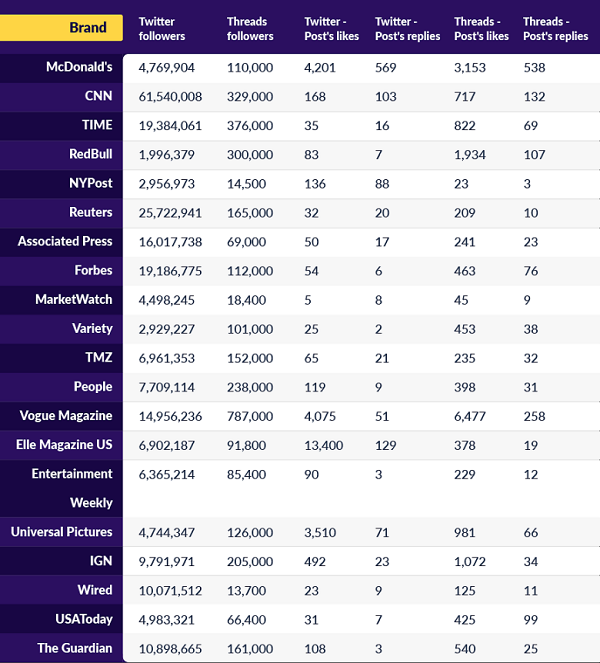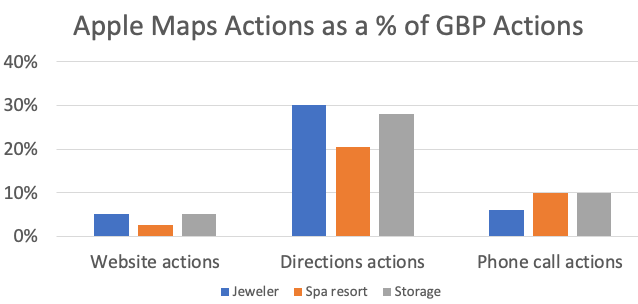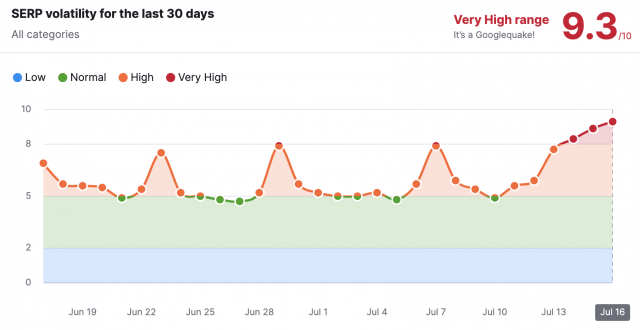Generative Engine Optimization (GEO): Mastering AI-Driven Search in 2025
Local Memo: How Brands Are Using Threads to Connect with Consumers
Local Memo: How Brands Are Using Threads to Connect with Consumers
In this week’s update, learn about brands connecting with consumers on the new Threads app; the importance of Apple Maps as a source of local traffic; finding the right place to open a new location; the risk of a Google penalty for service pages; the FTC’s investigation of OpenAI; and a new peak in search volatility over the weekend.
How Brands Are Using Threads to Connect with Consumers
Early signs indicate that Threads — the new app from Meta that surpasses 100 million users in its first week to become the fastest-growing app in history — is earning strong engagement from brands who were quick to utilize the platform. In fact, according to a study from WebPlanet, brands active on Threads have been earning eight times the engagement they do on Twitter. The overall user base is still much smaller than that of apps like Instagram or Twitter, but those users have been especially attentive to brand content in the first several days of the Threads app’s existence.
The National Retail Federation reports that 9 of the top 10 retailers in the U.S. have activated their Threads accounts. Many brands have adopted a “fun, casual” approach to Threads content, according to Stephanie Miles at Street Fight, with Ulta Beauty’s Christine White stating that the brand was focused more on ROV (Return on Vibes) than ROI in the early days of the platform. Miles surveys the Thread strategies of several brands including Nike, Wendy’s, and Free People.

Twitter vs. Threads engagement for top brands, courtesy Website Planet / Social Media Today
Apple Maps a Significant Source of Local Traffic
Mike Blumenthal at Near Media has shared the results of a new study that compares Google Maps and Apple Maps as sources of traffic for local businesses. According to the findings, Apple generates about 5% of the website clicks and 10% of the phone calls that derive from Google Maps today, though the influence of Apple appears to be growing. Driving directions are more significant as a proportion of overall actions, with the businesses surveyed earning 20% to 30% of directions requests through Apple as compared to Google. According to Blumenthal, approximately 37% of iPhone users utilize Apple Maps for navigation. The study found that, unlike what is typical with Google, the majority of actions on Apple Maps come from branded searches (54%) as compared to unbranded category searches (28%).

Courtesy Near Media
Finding the Right Place to Open a New Location
Andy Simpson offers some pointers to brands looking to open a new store or office, suggesting that local SEO techniques can be used to determine the optimal location. Simpson points out that proximity is a key factor in Local Search Ranking Factors and in Google’s own ranking documentation. But many companies open new offices without considering the SEO impact; for instance, opening a location near a dense cluster of competitors makes it much harder to rank well. Instead, Simpson suggests that you Google potential locations to assess how many competitors are nearby, preferably with a browser extension that lets you appear as though you are at the location of the proposed office. Ideally, you’ll choose a location that suits your business for other reasons and makes it easier for you to stand out in your category.
Service Area Pages May Risk Google Penalty
Joy Hawkins shares the sobering story of a business that was issued a manual ranking penalty by Google because of “thin content with little or no added value” on its service pages. The business had more than 3,000 pages on its website for areas where its services were provided, with all of the page content written by humans at no small expense to the business. But according to Google, content was not sufficiently differentiated across these pages. Varying content using synonyms and the like is not sufficient. Hawkins suggests that embedding reviews from third-party sites is one of the easiest ways to differentiate content across service pages.
FTC Investigates OpenAI, Citing Privacy Concerns
The FTC opened an investigation into OpenAI’s practices as early as 2020, according to a leaked document shared with the Washington Post. The FTC investigation, which appears to be ongoing, looks at whether OpenAI engaged in “unfair or deceptive practices” that may have undermined user privacy and data security. The leaked request asks OpenAI to provide extensive information to the FTC about how its large language models are trained, including details about the protection of consumer data. The FTC has exhibited concern in recent months about the power of AI to assist with fraudulent activities including deepfakes and the spread of malware, as well as its potential to exhibit bias, for instance in consumer credit decisions. OpenAI CEO Sam Altman has responded publicly to the FTC’s concerns, posting on Twitter, “[W]e built GPT-4 on top of years of safety research and spent 6+ months after we finished initial training making it safer and more aligned before releasing it. [W]e protect user privacy and design our systems to learn about the world, not private individuals.”
Search Ranking Volatility Reaches New Peak
The volatility of search ranking changes reached a new peak over the weekend, according to a writeup from Barry Schwartz at Search Engine Roundtable, where he described the volatility as “massive and explosive.” Schwartz has been reporting on usual levels of search volatility for several days now, but says the results over the weekend eclipse what was seen before. Google has not issued information about any confirmed algorithm updates since April.

Semrush’s measurement of search volatility, courtesy Search Engine Roundtable




